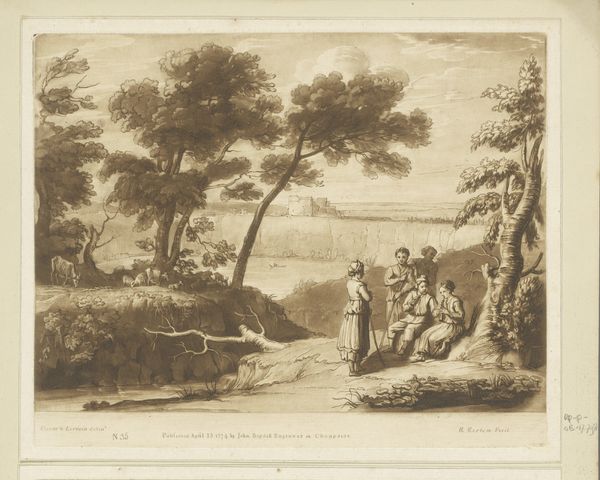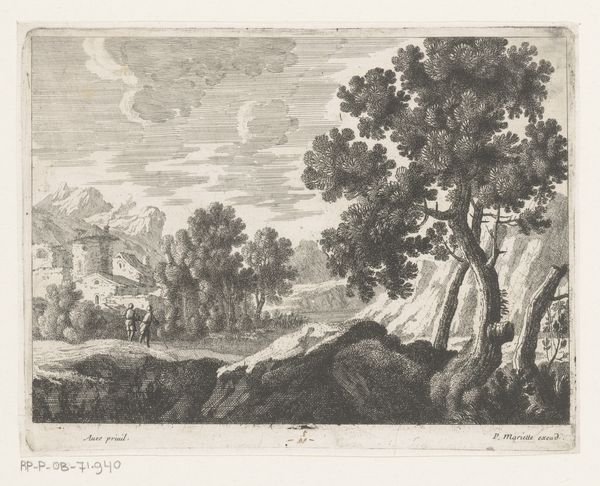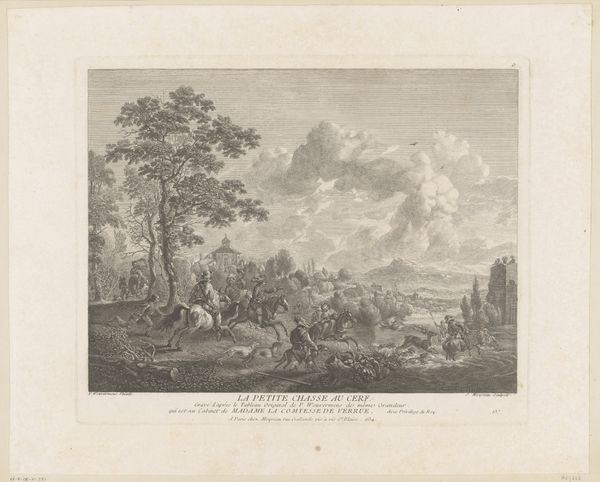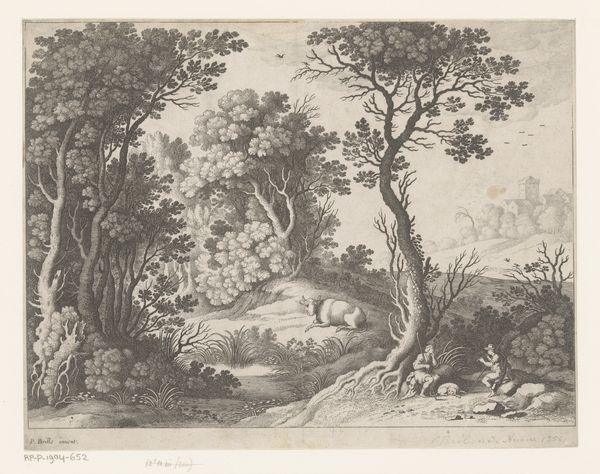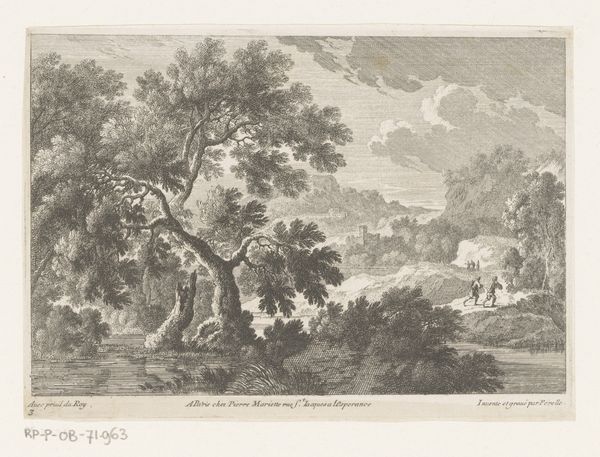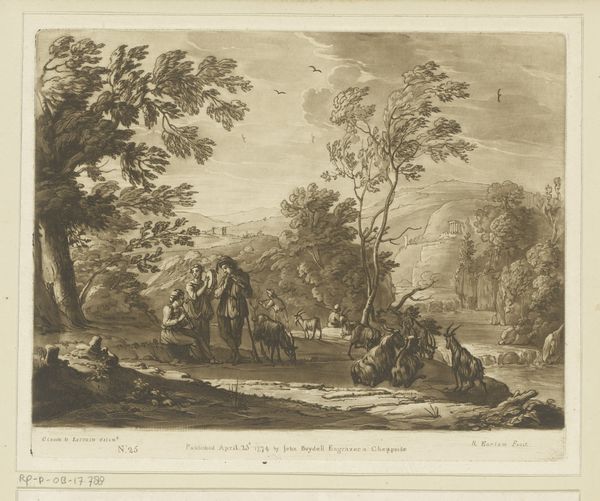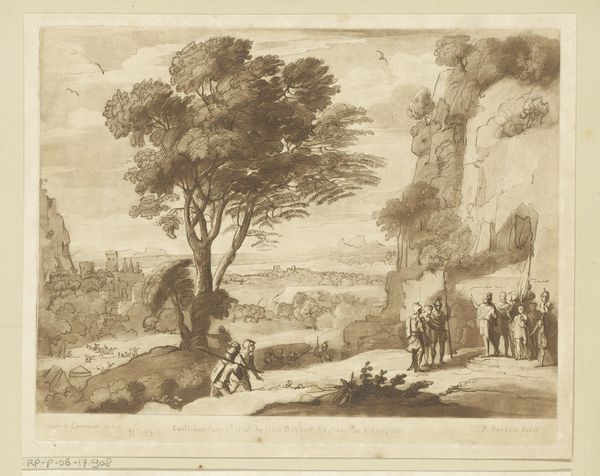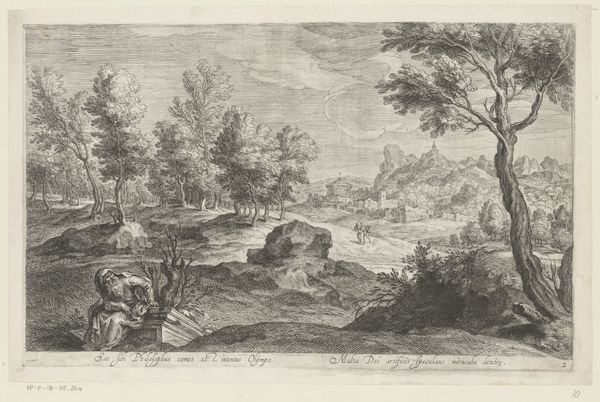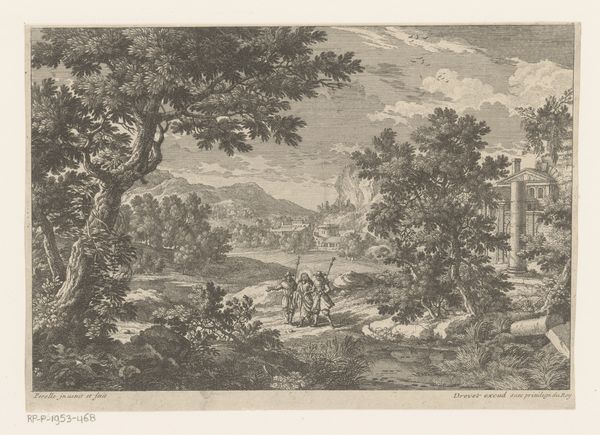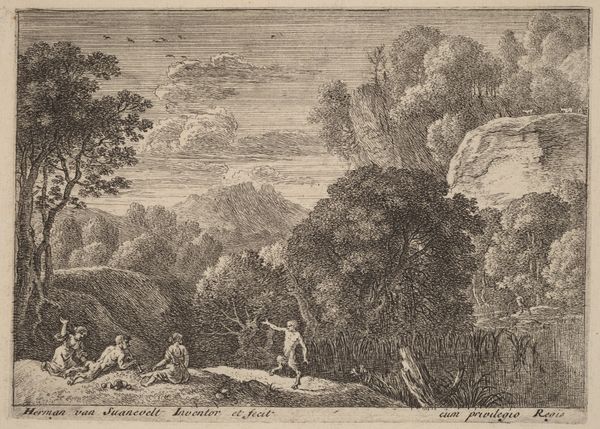
print, etching, engraving
#
narrative-art
#
baroque
# print
#
etching
#
landscape
#
history-painting
#
engraving
Copyright: National Gallery of Art: CC0 1.0
Curator: Welcome, everyone. We’re standing before “Balaam and the Ass,” an etching by Herman van Swanevelt. It beautifully renders a biblical scene within a grand landscape. Editor: It strikes me immediately as quite stark, doesn’t it? The landscape dominates— overwhelming even. There's this sense of... vulnerability imposed on the figures by the sheer scale of nature. Curator: Exactly! Swanevelt was part of a generation that was transforming landscape art, drawing influence from the Carracci brothers, whose ideals included the fusion of landscape and history painting. The aim was to present these elevated biblical and mythological narratives within the frame of landscapes that feel classically composed. Editor: Which gets at the core tension, doesn't it? The etcher's line here defines the texture of foliage, stone—all elements directly connected to available resources. What did engaging with landscape mean for printmakers reliant on these materials? The politics of place, availability of stone, metal, these concerns necessarily underpin his sublime vista, right? Curator: Absolutely, and we can see this translated into its reception. This particular piece might have circulated among a more learned and art-interested audience; viewers would recognise the biblical narrative of Balaam and his talking ass while also appreciating Swanevelt’s sophisticated understanding of Italianate landscape painting. Editor: That relationship to audience impacts production. Looking closely, the hatching, cross-hatching, it suggests an artisanal work, each plate individually and carefully wrought—demanding a degree of expertise. Yet it also reproduces, creating access— to knowledge, to art, if one could afford such art. The image operates as both commodity and cultural object, isn’t it? Curator: Very much so, and Swanevelt clearly understood the nuances of this medium. It allowed for the dissemination of his compositions on a wider scale while also solidifying his position within the artistic landscape of his time. Editor: It's compelling to think about that artistic labour invested here, versus the message delivered; something about humans, nature, art, the act of observing and then shaping one's understanding and disseminating it widely. Thank you, it definitely adds depth to experiencing the artwork! Curator: Thank you, likewise. I hope that this dialogue will help give further insight into this evocative print!
Comments
No comments
Be the first to comment and join the conversation on the ultimate creative platform.

